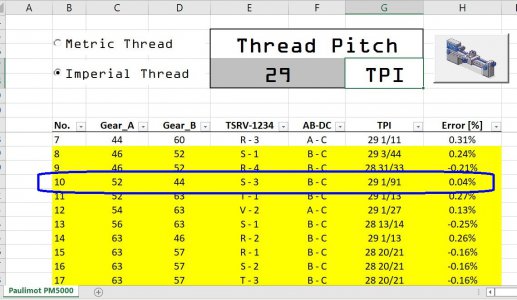- Joined
- Feb 7, 2021
- Messages
- 90
I believe it should be possible to cut a tapered thread by offsetting the tailstock as you would to turn a taper. That's the only way to single point a tapered thread that I've come up with. I'd be curious to know if there are other ways.(not a tapered thread,)
Your ELS might also benefit from a 48 tpi setting, I believe you'll find 48 tpi in both the UNC and UNF standards.
-Pete


